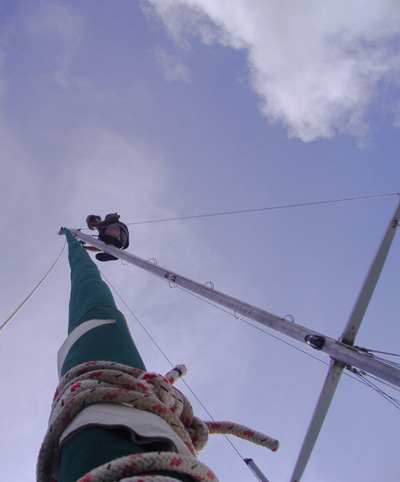So, we were talking about vises...
The thing about a good (not to be confused with "expensive") vise is that it is a very useful, if simple, tool aboard a boat. Simple is a good thing.
Everyone knows that vises hold things, that's pretty much their role in life and they do it pretty well. What most people forget is that the mechanics that allow it to grip things also can be used to exert force... Handy when you need to crimp some battery cables and dropped your crimper overboard or suchlike. A proper vise is also an anvil and more often than you'd think, being able to pound the hell out of a piece of metal with a five pound sledge or a ball pein hammer (you do of course have ball pein hammers, right?) will make an unruly part fit or function...
Like anchors, a vise should have some weight and next-gen vises should be avoided. A good rule of thumb is if it does not weigh at least fifteen or twenty pounds simply say NO!
The vise on "So It Goes" is a Pony which I picked up on sale for $20, and because I don't have a proper workbench to bolt it to, I simply bolted it to a 2' X 2' scrap of 1/2" plywood. The weight of the vise keeps it in place on a cockpit seat (for instance) when I'm cutting, grinding, hammering, or other metal mayhem. For those rare times I need something even more solid I can always clamp the plywood down when needful.
The Pony is an excellent vise but really no different than a cheap Chinese copy. If you really feel the need to look hip, a can of orange spray paint only runs a couple of bucks. So my advice is buy cheap, but buy heavy.
A quick word about those sad wannabee vises that come and go every so often geared to the yacht trade... Don't! They are silly expensive and they simply don't work worth a damn. Those clever vises that fit into a winch are the worst of the bunch as they are not very good vises but are really excellent at destroying winches. Actually just about any tool that says "yacht" or "marine" on the box is best avoided...
Listening to David Ruiz
So it goes...









